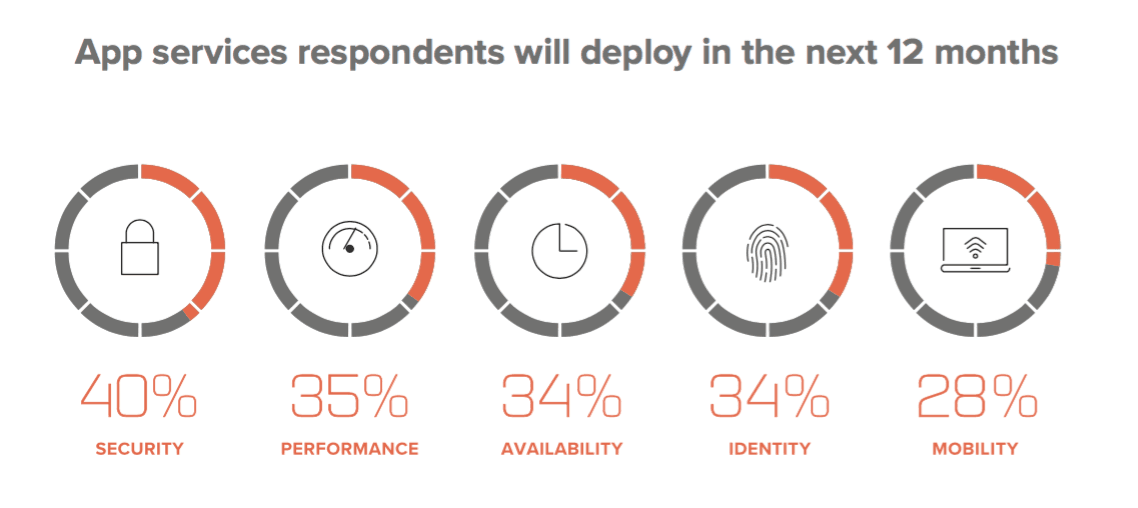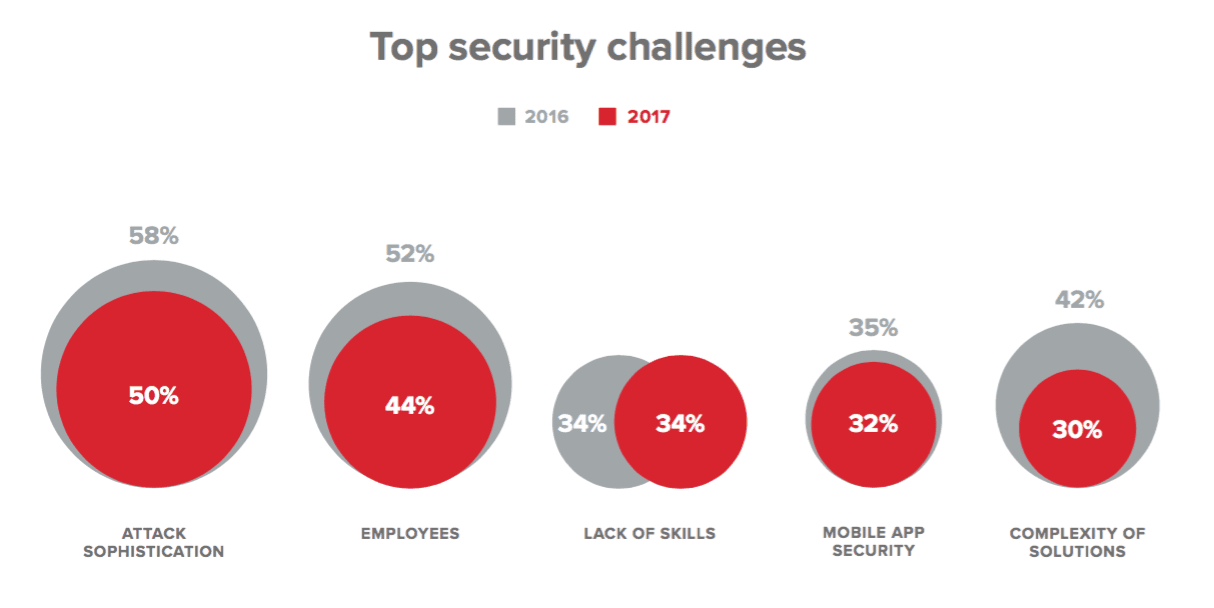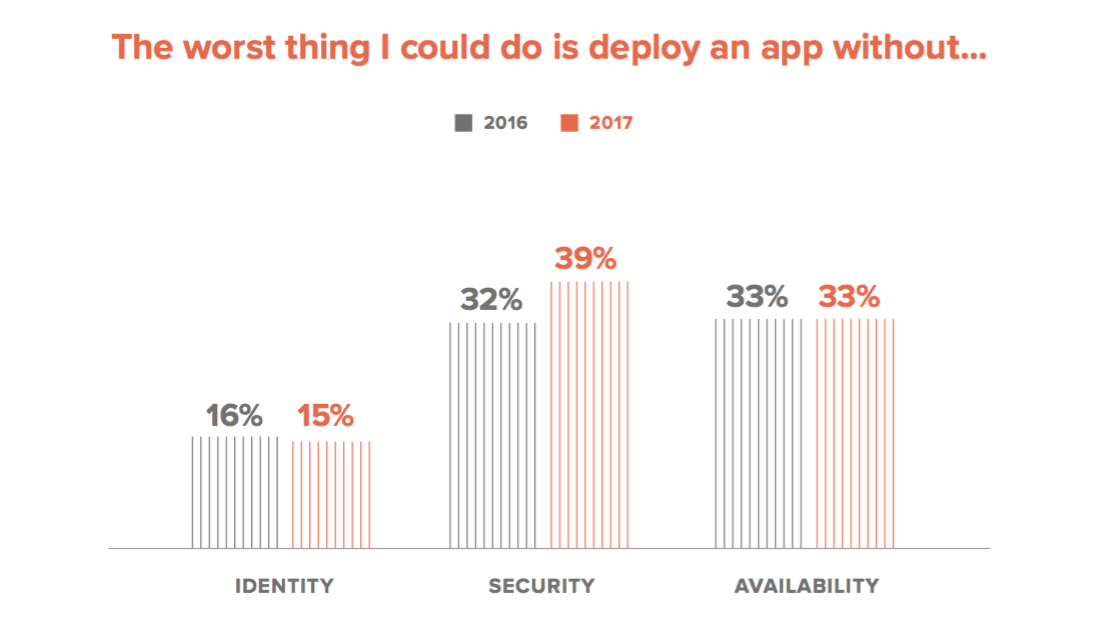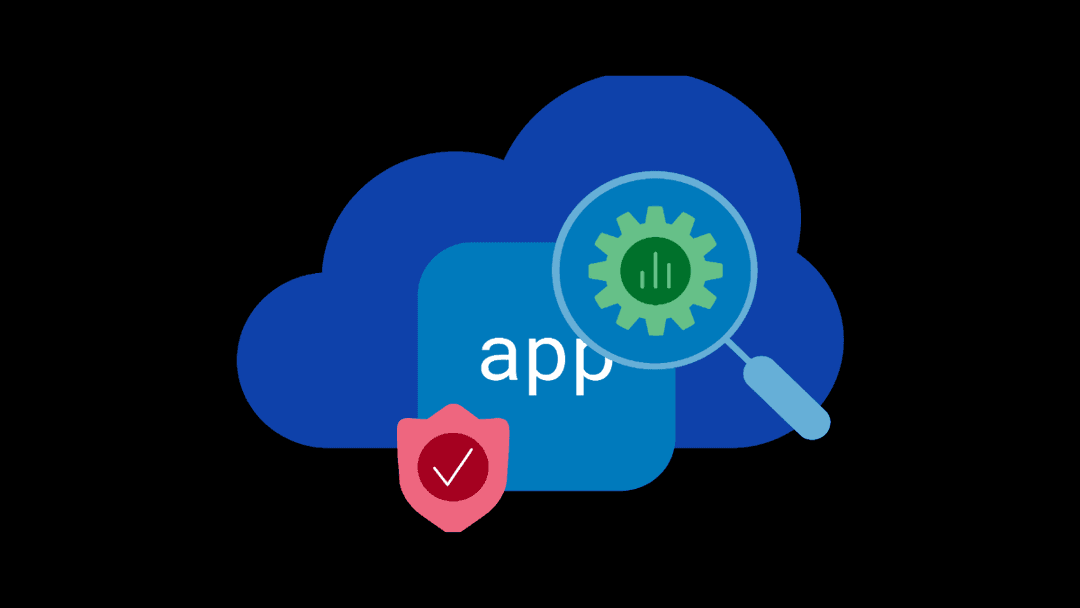As frequent F5 blog readers are aware, we've released the third edition of the State of Application Delivery (SOAD) report. The 2017 report represents the survey results of nearly 2,200 executives and IT professionals and covers all aspects of application delivery including on-premises, hybrid cloud, and cloud. Several of the findings of the report touch on how the respondents relate to the security environment. Nearly one in five of the respondents have security titles, and in this post we'll focus on some of the items that are top-of-mind among their peers.
Finding: There’s a cloud and security expertise gap.
Surprisingly, four out of five respondents will be adopting multi-cloud strategies in 2017. And one of those five already have half or more of their applications in the cloud! But do organizations have enough cloud experts to deal with even a single cloud today? I know guys who are experts in AWS and they know nothing about Azure, and vice versa.
Perhaps unsurprisingly for anyone who reads my column (or Jon Oltsik’s), one in three organizations cite the security skills gap as a significant security challenge. We just aren’t training enough whitehats to keep up with all the blackhats who are training themselves around the world. There is a chance that the security skills gap will get closed by a magic combo of machine learning and automation; the DARPA Cyber Grand Challenge announced at DEF CON 24 is already pointing in that direction. But until that happens, hooray for security street cred.

Case in point: the SOAD report queried respondents to see which application services they plan to deploy in the next twelve months, and the number one answer, at 40%, is security.
Finding: Deployments of security application services grow more sophisticated.
The report asked survey participants about their strategies to defeat emerging threats, secure their applications, and protect their data. The good news for this year is that, in general, organizations feel more confident in their ability to deal with their top security challenges than last year.

In every challenge area except the skills gap, organizations feel slightly less freaked out. I asked Lori MacVittie, one of the report’s authors why this is:
“We think it means they’re less fearful, in general. We suppose that might be due to the fact that security budgets have been on the rise, and thus they’re able to put in place the solutions they need to address their challenges. It’s not in the public report, but ‘budget too small’ as a security challenge dropped from 41% in 2016 to 30% in 2017, hence our supposition.”
Globally, organizations with the most confidence in their ability to withstand an attack have expanded beyond a simple perimeter approach to security. Many plan to deploy DDoS mitigation (21 percent), DNSSEC protection (25 percent), and a web application firewall (20 percent) in the next year.
Finding: The worst thing I could deploy an app without is…
Every year the SOAD survey asks participants what they think the worst thing that they could deploy an application without.

Security takes top billing by an even greater margin than a year ago. In 2016, availability edged out security. Perhaps organizations are finally becoming aware that a breach can have a far longer lasting negative effect than an outage. The constant drumbeat of breaches is likely driving that awareness. That’s a good thing.
The most common answer to application security is, of course, the web application firewall (WAF). Over half of all cloud-first respondents report having a WAF deployed. That’s not too surprising, though it does make you wonder what the other 48% are doing...
The 2017 State of Application Delivery Report
Interested viewers can find the full 2017 State of Application Delivery report here.
About the Author
Related Blog Posts

SaaS-first strategies reshape cloud-native application delivery
F5 NGINXaaS empowers cloud and platform architects to unify operations, reduce complexity, and deliver exceptional digital experiences at scale.

F5 ADSP Partner Program streamlines adoption of F5 platform
The new F5 ADSP Partner Program creates a dynamic ecosystem that drives growth and success for our partners and customers.

Accelerate Kubernetes and AI workloads with F5 BIG-IP and AWS EKS
The F5 BIG-IP Next for Kubernetes software will soon be available in AWS Marketplace to accelerate managed Kubernetes performance on AWS EKS.
F5 NGINX Gateway Fabric is a certified solution for Red Hat OpenShift
F5 collaborates with Red Hat to deliver a solution that combines the high-performance app delivery of F5 NGINX with Red Hat OpenShift’s enterprise Kubernetes capabilities.
F5 Silverline Mitigates Record-Breaking DDoS Attacks
Malicious attacks are increasing in scale and complexity, threatening to overwhelm and breach the internal resources of businesses globally. Often, these attacks combine high-volume traffic with stealthy, low-and-slow, application-targeted attack techniques, powered by either automated botnets or human-driven tools.
Phishing Attacks Soar 220% During COVID-19 Peak as Cybercriminal Opportunism Intensifies
David Warburton, author of the F5 Labs 2020 Phishing and Fraud Report, describes how fraudsters are adapting to the pandemic and maps out the trends ahead in this video, with summary comments.